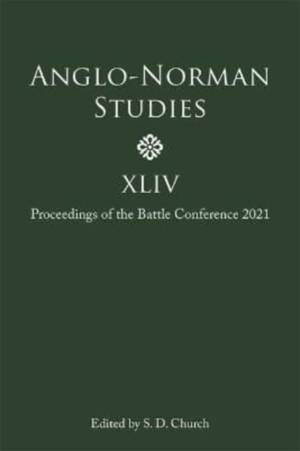
- Afhalen na 1 uur in een winkel met voorraad
- Gratis thuislevering in België vanaf € 30
- Ruim aanbod met 7 miljoen producten
- Afhalen na 1 uur in een winkel met voorraad
- Gratis thuislevering in België vanaf € 30
- Ruim aanbod met 7 miljoen producten
Zoeken
Anglo-Norman Studies XLIV
Proceedings of the Battle Conference 2021
€ 177,45
+ 354 punten
Omschrijving
The essays collected here demonstrate the rich vitality of scholarship in this area. This volume has a particular focus on the interrelations between the various parts of north-western Europe. After the opening piece on Lotharingia, there are detailed studies of the relationship between Ponthieu and its Norman neighbours, and between the Norman and Angevin duke-kings and the other French nobility, followed by an investigation of the world of demons and possession in Norman Italy, with additional observations on the subject in twelfth-century England. Meanwhile, the York massacre of the Jews in 1190 is set in a wider context, showing the extent to which crusader enthusiasm led to the pogroms that so marred Anglo-Jewish relations, not just in York but elsewhere in England; and there is an exploration of poverty in London, also during the 1190s, viewed through the prism of the life and execution of William fitz Osbert. Another chapter demonstrates the power of comparative history to illuminate the norms of proprietary queenship, so often overlooked by historians of both kingship and queenship. And two essays focusing on landscape bring the physical into close association with the historical: on the equine landscape of eleventh and twelfth-century England, adding substantially to our understanding of the place of the horse in late Anglo-Saxon and early Anglo-Norman societies, and on the Brut narratives of Geoffrey of Monmouth, Wace, and Laȝamon, arguing that they use realistic landscapes in their depiction of the action embedded in their tales, so demonstrating the authors' grasp of the practical realities of contemporary warfare and the role played by landscapes in it.
Specificaties
Betrokkenen
- Uitgeverij:
Inhoud
- Aantal bladzijden:
- 186
- Taal:
- Engels
- Reeks:
- Reeksnummer:
- nr. 44
Eigenschappen
- Productcode (EAN):
- 9781783277131
- Verschijningsdatum:
- 14/06/2022
- Uitvoering:
- Hardcover
- Formaat:
- Genaaid
- Afmetingen:
- 156 mm x 234 mm
- Gewicht:
- 435 g

Alleen bij Standaard Boekhandel
+ 354 punten op je klantenkaart van Standaard Boekhandel
Beoordelingen
We publiceren alleen reviews die voldoen aan de voorwaarden voor reviews. Bekijk onze voorwaarden voor reviews.







